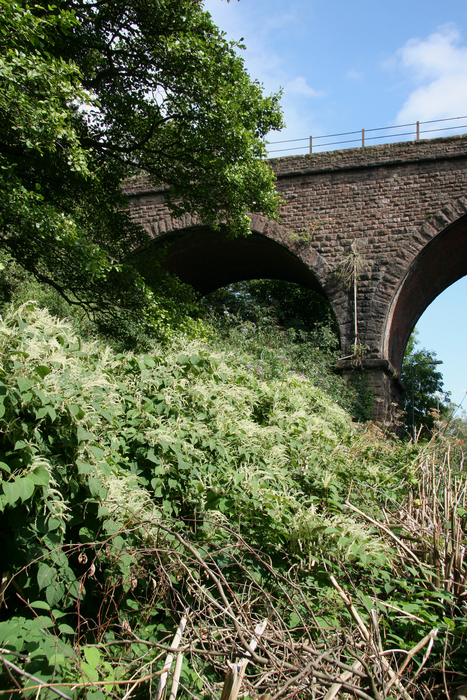Heart-shaped claws
reveal their care –
gnarled fingers
buried deep in
soil and
brick
and
clay.
A ghostly forest,
spreading
shadows long
across naïve
and native
hosts.
Drawing blood from loam
and stone,
tiny fragments
spread their message
thick and fast
until
a gentle, soapy rain descends
unknotting weeds
with glossy hands –
a kinder poison
for leaves we choose
to pluck
and grow.

This poem is inspired by recent research, which has looked at the long-term environmental impact of different methods to control Japanese knotweed.
Japanese knotweed (Fallopia japonica) is an invasive plant species native to East Asia that has spread throughout the world. It is known for its tall bamboo-like stems, heart-shaped leaves, and small white flowers. Despite its seemingly harmless appearance, Japanese knotweed is a notoriously destructive plant that can grow through concrete, brickwork, and tarmac, causing damage to buildings and infrastructure. Its strong roots can also outcompete native plant species, causing harm to ecosystems and biodiversity. It is very difficult to eradicate as even small fragments of the plant can regenerate into a full-grown plant. Its presence can also reduce the value of properties and cause legal issues for homeowners. This can cost over £165 million every year to manage in the UK alone and as sustainability is becoming more important, it is vital to understand long-term environmental impact of different methods to control Japanese knotweed.
In this new study, researchers looked at the entire life cycle and long-term impacts of different management approaches for dealing with Japanese knotweed. Using a life cycle assessment methodology, the researchers evaluated the environmental impacts of various chemical and physiochemical knotweed management methods, including the production of materials and herbicides required to achieve knotweed control. The study found that control methods that spray glyphosate (a broad-spectrum herbicide) directly onto the leaves of plants, used the least materials, had the lowest environmental impacts, the lowest economic costs, and is, therefore, the most sustainable approach to tackle knotweed management. The results of this study further emphasise the importance of carefully considering both the risks and benefits of invasive plant management strategies.
Discover more from The Poetry of Science
Subscribe to get the latest posts sent to your email.
Wow! I love it! ❤️
Thanks Karen. 😁
Hi Sam, while I like many of your poems, I’m not sure about this one. You describe glyphosate as a “kinder poison” when it’s banned in the EU after WHO research concluded in 2015 that it’s a probable human carcinogen. Since then there’s been recent evidence that it can harm bees. I understand that Japanese knotweed, as a tenacious invasive species, is a real problem, but using glyphosate to kill it can have very undesirable side-effects. I was disappointed not to see any mention of this in your scientific note.
Thanks Phil, I totally take this point. I was trying to use the phrase ‘kinder poison’ to be gently ironic, i.e. that how can any poison be kind? And I also take your point about the dangers of glyphosate and it’s side effects, which are more fully explored in the scientific research itself, but yes – you are right i should also have highlighted that in my note as well.
Thanks Sam – sorry I missed the irony – it does read better with that in mind.
Thanks Phil! 👍
Loved the poem but hate the push to use toxic herbicides. Take a look at the Japanese Knotweed facebook page
(https://www.facebook.com/profile.php?id=100087213288751)
and be amazed at this plant that is revered in the east but reviled in the west. It is truly a plant for our times.
Thanks Sarita,
And thank you for this excellent link. I suppose that I wasn’t trying to advocate for the use of toxic herbicides, but rather present research that has been done into at least considering the most ‘sustainable’ management strategies…